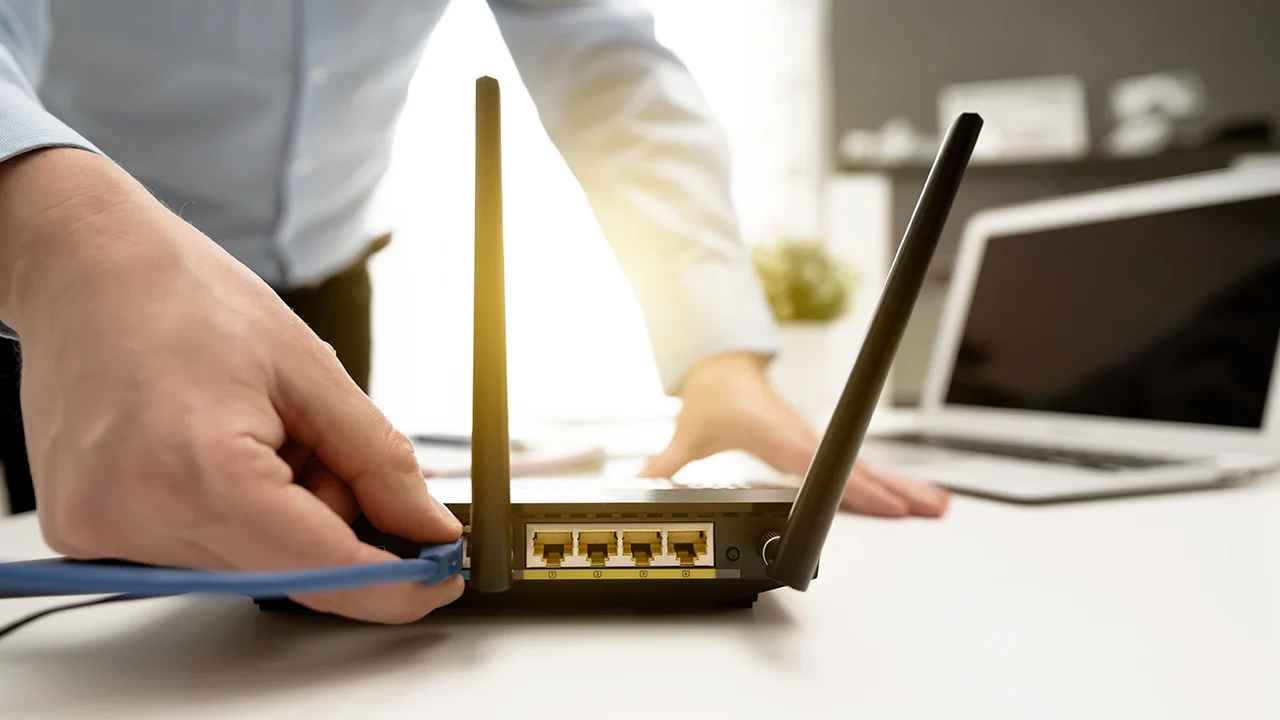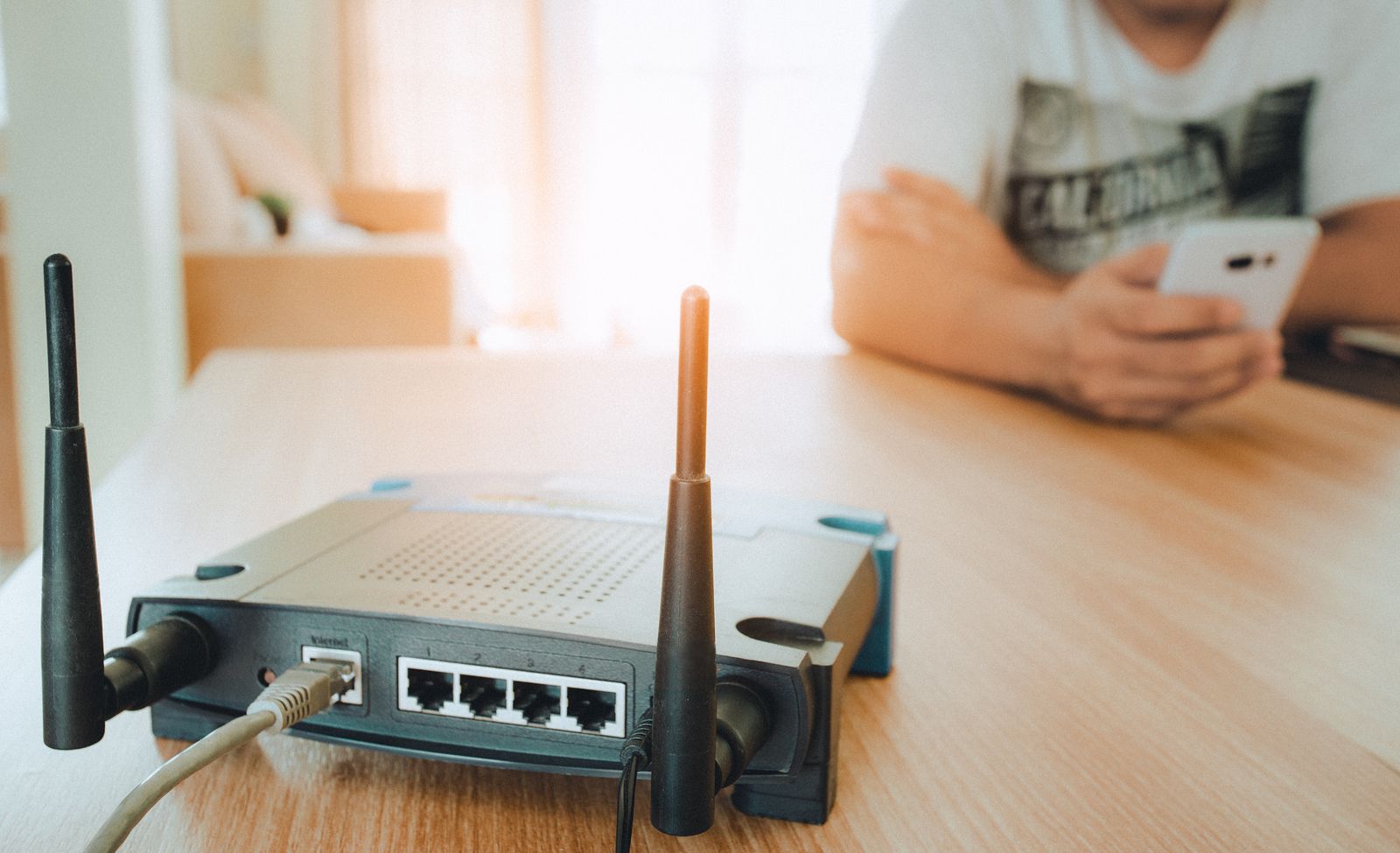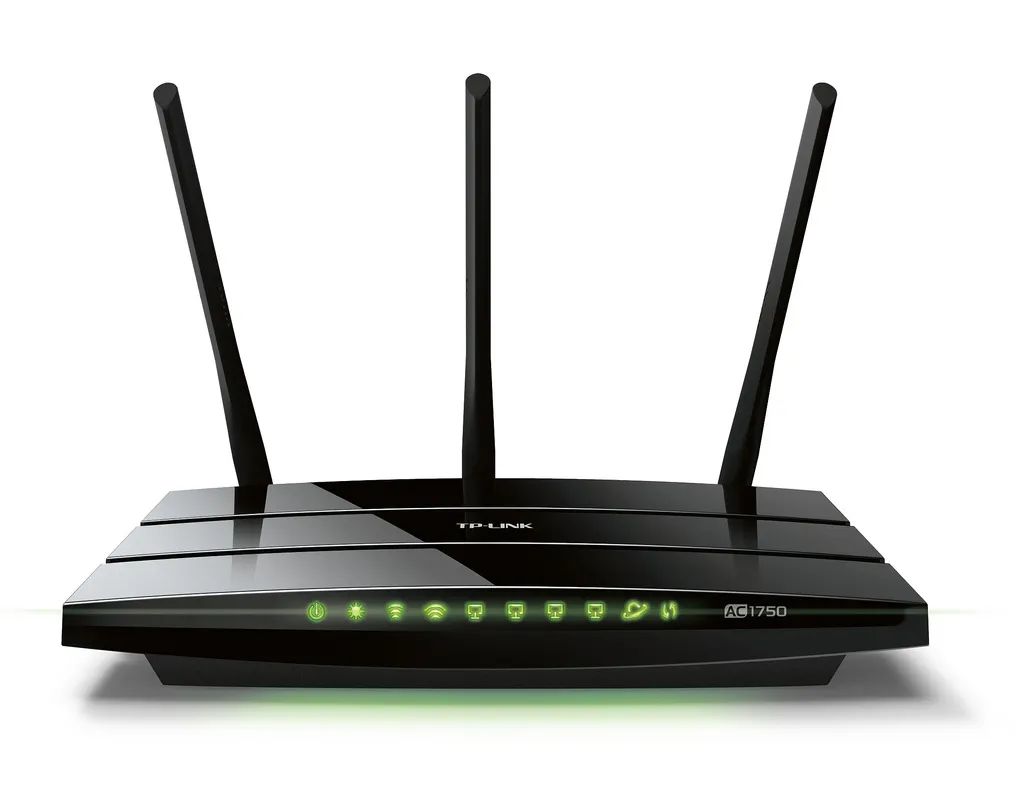Are you having a poor Wi-Fi signal and wondering how can I test my router for problems? You can determine whether your router is the problem in several ways.
What is truly a mystery to most modern people, especially younger generations, is how people manage their everyday private and professional lives without using the Internet. The Internet has been around for less than 40 years but has revolutionized the world.
Today, there is not a single modern high-tech device that cannot be connected to the Internet and joined with unlimited data. The Internet is everywhere in today’s world. There’s almost no home or office without internet access since it concerns the personal and professional aspects of people’s lives.
However, such a high dependence on technology is not without its faults; devices designed to constantly transfer and spread the Internet tend to break down and misbehave. The main reason for most of the problems is the router; so many people ask how can I test my router for problems and what can I do to fix them.
To address this issue, we have created this short article summarizing all the possible ways you can perform tests on your router and find out if it is the culprit you want. So, let’s get started!

How Will I Know If the Router Is the Problem
If the Internet starts to have issues and you feel like you are losing connectivity, then it is very likely that your modem, router, or internet provider will be to blame.
Since we will mainly focus on your Wi-FI router in this article, here are several tips for recognizing that it is the main cause of the problem:
Slow internet connection speeds and sudden drops in connectivity
Once you notice that your internet connection is losing speed and slowing down, this is the first sign that this is a hardware-related issue. A slowed-down internet connection usually means the router is having problems operating properly.
If your internet connection drops more frequently, this may also signal that the router is having trouble sustaining a stable connection. Frequent disconnecting and connecting with the Internet provider is often a hardware problem with the router.
The router’s indicator lights are behaving strangely
LED lights are placed on any router to visually indicate how a device operates. Each light has its purpose and operation pattern, which you can find in the operating manual. LED lights are rare to burn out, so if you see one not working, that might not be a problem with the device but with the light itself.
However, there are often when the router lights may appear dimmer than usual, indicating a power transmitting problem within the router. If a light that is supposed to blink is constantly lit, this may indicate that the router has problems transferring the internet connection to your other devices.
Problem with the router’s ports
The least likely problem is that one or several ports on your router can go bad and lose connectivity. But that doesn’t mean that it won’t happen.
For a router port to stop working, it has to be either physically damaged or burned out from the inside so that the port doesn’t receive any electrical information.
If one of the LAN ports on your router is broken, the device connected will lose internet connectivity, while all others will function normally. However, if the WAN port is damaged, then this may cause you to lose internet across all your devices connected by Wi-Fi and LAN.
Obsolete hardware
As with other modern and precise tech hardware, routers also have a life expectancy of about three to five years. This doesn’t mean that the router will break down immediately after this period, but you might notice a constant drop in performance and connectivity.
The reason is that the technology behind these devices is constantly evolving. Old routers quickly become obsolete, and with increased internet speeds, new and more modern hardware and software solutions are required.
Dust may also be a factor in shortening the lifespan of a router, as with years of use, it gets inside the vents and damages the electrical parts. This also leads us to the next reason why your router may cause problems.
Issues with overheating
Heat is the number one enemy of electronic devices, and overheating causes their lifespan to drop significantly. Routers have the same problem, which is why they are built with vents on the side to allow for better airflow and circulation.
As we have said, over the years, dust builds up inside the router, and unless you are bold enough to open it up and blow out the dust with an air compressor, your router will undoubtedly suffer the consequences.
Overheating will cause it to slow down, reducing the overall internet connection and speed, and may even cause frequent drops in connectivity.
How Can I Test My Router for Problems
Basic tests
If you are having some of the issues we described above, then there are several things you can do to test your router and find out if it is the source of the problem. All tests require different skill levels, so let’s start with the basic ones.
Physically examine your router
The easiest thing you can do to test your router is to make a physical inspection and see how the device behaves. This means you must ensure the device works as it should, whether it has overheating problems, whether all the LED lights function, etc.
In this stage, you can turn off your router and modem directly from the electrical outlet and wait for about ten to 15 seconds before plugging them back in. This will cause all of the electricity within the router to completely deplete and the device to perform a sort of “soft reset.”
That many times solves the problem because electronic devices such as routers often experience such errors that a soft reset may be able to resolve.
Check to make sure your internet provider is not having any issues
Often you might be struggling with your router when the real reason why there is no internet connectivity would be your internet service provider. So, after you perform the first test and there is no response, feel free to contact your internet provider and ask if there is a problem at their end. If that’s the case, you must wait until they fix the problem.
Test the speed of your internet connection
Depending on the Internet speed package you have picked from your service provider, you should also consider testing it to see if it causes any problems. Higher speed packages shouldn’t cause any problems, but if you have too many devices connected to the same network, they might slow the speed down.
A great website where you could perform an internet connection speed test is Speedtest.com, which will perform very accurate readings depending on real-time factors.
If you know the Internet speed of the package you pay for, and you are getting a result below that number, then you should contact your provider and ask them if there is a problem. For example, a 100 Mbps internet speed package should not deliver 10 Mbps, but a value much higher than that.
Try connecting your devices using an Ethernet cable
Once you make sure that your internet provider isn’t the source of the problem, you can try and connect another Wi-Fi-enabled device to your router before moving on with a physical connection. If another device can connect to the Internet via the router’s Wi-Fi network, then the problem may not be the router but the device that lost the connection.
If the Wi-Fi is completely unresponsive, then go ahead and connect your PC or laptop to the router directly via an Ethernet cable. Even if there isn’t any internet connectivity with the first cable, try a second one to ensure there aren’t any problems with the cables.
If that solves the problem, the Wi-Fi signal on your router may be too weak or obstructed by walls and other barriers that may interfere with its quality.
Adjust the position of your router
The router’s position in your home or office greatly affects internet connectivity and speed. Many people place their routers in a cramped space, surrounded by other items that impair the signal and significantly decrease connectivity.
If your router is in a tight space, then what you can do next is to try and change its position to see if that improves anything with the connection quality.
To maximize the Wi-Fi signal’s strength, ensure your router is centrally located in your home or office and far from glass or metal objects.
Physical barriers are the worst enemy of Wi-Fi quality, and they can include thick brick and concrete walls and large technical appliances such as refrigerators or heavy metal doors. Believe it or not, fish tanks with thick glass walls can also drastically impact the quality of the Wi-Fi signal.
Scan your devices for viruses or malware
Your internet connection can often fail not due to harmful software uploaded to your device while surfing the web. This will cause your entire device’s performance to drop because malware and adware programs use many of the system’s resources in the background.
So, besides performing router checks and improving your network connection, it would also be a good idea to run a virus scan of your computer. This will rule out any potential risk to the operating system that may also slow down your internet connection speed.
Some indicators of suspicious malware or adware are the constant pop-up ads, unexpected changes to your internet search engine, or sudden diversions to harmful websites.

Advanced testing techniques
After we exploited some of the basic ways you can test your router for problems, it is time to move on to some of the more advanced ones.
Note that these tests involve steps that may cause the device to lose its calibration data. If you don’t know how to set up your device from scratch, you should ask someone with more experience to do it.
Perform a “Hard Reset” on your router
Performing a “Hard Reset” on your router is the beginning of a more advanced testing and setup, which involves a deeper understanding of the device. It requires the skill to readjust the router because it will lose all of its data to which it was initially set up when you purchased it.
Every router has a “Hard Reset” button on the back of the device, usually where the WAN and LAN ports are located. To perform a hard reset, you need to press this button and hold it pressed for at least five seconds. This causes the router to convert back to its factory settings. Once you have done that, you can move to the next step.
Set up your router anew
Setting up your router anew means you must access its firmware and make manual adjustments. This is done by typing a specific IP address into your browser, granting you access to the router. Take note that your PC or laptop should be connected to the router via an Ethernet cable for this step.
The most common IP address for accessing the router is 192.168.1.1. When you enter it in your web browser, you should gain access to the initial page of the router’s setup and may also be required to enter a username and password. Both are provided with the router’s manual, and many routers often use the word “admin” for both username and password.
After you gain access to the router setup interface, there are several things you need to address. Many routers have all the essential parameters combined in one basic setup, from which you can make all the adjustments. The most important is setting up your Wi-Fi and adding security measures and your provider’s IP address to gain internet connectivity.
Reinstall the router’s firmware
If you are having trouble performing a hard reset on your router, that might mean something is wrong with its firmware. The router’s firmware is like its operating system or the software that helps the router operate normally.
Just like the operating system on a PC or Mac can crash because of errors, a router’s firmware can also malfunction and crash, especially if the device has been tampered with.
The firmware may also be obsolete and require an update, which may ultimately fix the problem. Each router is different when reinstalling the firmware, and we cannot go into further detail about the process and steps you need to take to reinstall it. You should note that this is a tricky and difficult step, and if you make a mistake, you could brick your router, rendering it permanently disabled and broken.
If you decide to do this step, search for information online on how to do it, starting with the model of your router and a detailed explanation of the process.
Are There Any Ways to Boost My Internet Speed?
Now that you have exploited the most common ways to test your router for problems and still have trouble with your Wi-Fi signal, we will give you some tips on improving and strengthening it.
Power off any devices that you are not using
The thing about Wi-Fi is that its overall speed and strength are divided between all the devices that are connected to the router. This is called bandwidth; the more devices connected to the wireless network, the more the bandwidth is divided between them depending on their need.
Many devices constantly connected to your router take away its speed even if you are not using them. They may perform updates or run background operations that require internet access, thus slowing down your internet connection.
Disconnecting any devices you are not using will increase the bandwidth, and internet speed of the connected devices, allocating more speed for their needs.
Use two Wi-Fi signal channels at the same time
Another way you can optimize your Wi-Fi network and signal is by using both 2.4 GHz and 5 GHz channels at the same time. Note that this feature is only available in newer router models and is done by accessing the firmware and setting the router internally.
Both channels operate as separate Wi-Fi networks, and they can also have different names to tell them apart.
The 2.4 GHz channel is characterized by a larger area of coverage and lower rates of data transfers. On the other hand, the 5 GHz channel has a narrower coverage area and can hardly penetrate walls, but it has a higher data delivery rate.
Knowing this, you can set lower data consumption devices farther from the router and higher data consumption devices closer to it. This will optimize the router’s Wi-Fi signal, and internet speed since the devices won’t interfere, unevenly dividing the bandwidth.
Consider extending your wireless network
Placing your router in the center of a large house or office in hopes that it will cover every device’s internet needs is often not enough. What if you simply want to take your laptop or smartphone out in the yard and have internet access there? One router will not have enough power to provide that much coverage.
To resolve this, you can effectively extend your Wi-Fi network and take a load off your router. The solution is to purchase a Wi-Fi extender device, which is placed somewhere in the area where the wireless signal is weak. This device is simple; all you need to do is plug it into an electrical outlet and pair it with the router.
A wireless extender receives the Wi-Fi signal from the router and amplifies it across a wider area. This way, instead of moving your router around, you can simply place several extenders around your come and achieve full coverage.

When Should I Consider Replacing My Router?
If your internet connection is still misbehaving, even after you have performed all the tests we talked about, it might be time to replace it with a new one for good. Although the router may still be working in an underperformed way, it might fail at any time, leaving suddenly without internet connectivity.
First, you should consider replacing your router if it is over five years old. After this period, high-tech devices like these usually stop receiving firmware updates, and their software becomes obsolete. Frequent updates are important for any device, as they help remove errors in previous software versions while improving the device’s security protocols.
The second reason you should consider replacing your router with a new one is if you are starting to see a gradual performance decline over a short period. Even after running all the tests and resetting your router, it is probably hopeless to try and do anything else if it still has poor performance issues.
As mentioned earlier, poor performance usually comes with age and can often be caused by overheating if the router is clogged with dust. This is a normal and unavoidable process, as all electronic devices are not made to last forever.
Conclusion
Knowing what to do and performing basic and advanced tests on your router is a good idea, especially if you are a tech enthusiast. Finding where the problem lies and trying to fix it gives great satisfaction.
Because we are tech lovers, we have decided to write this review after getting so many inquiries from people like, how can I test my router for problems, what do I have to do to reset my router to its factory settings, etc. It seems that this is an everyday issue for thousands of users, so we hope we were able to provide useful ways and techniques to perform tests on your router.
Remember that each router model is different, so we only gave you general guidelines that give a sense of direction. If you are willing to perform any advanced tests, we advise that you search for online instructions on how to do them correctly.